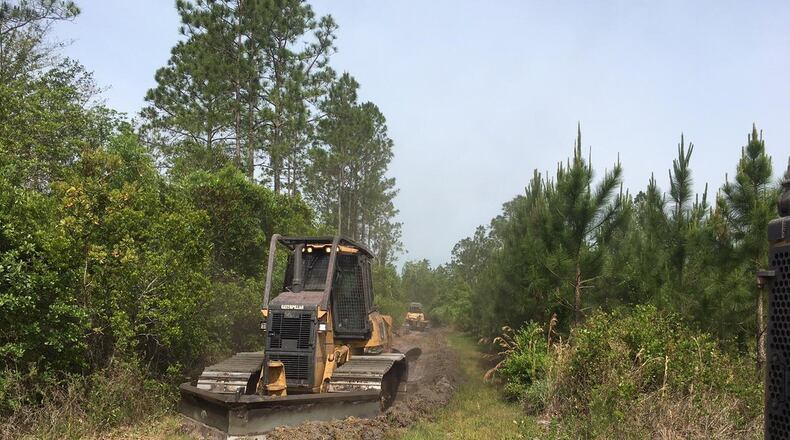Officials battling the wildfire in the Okefenokee National Wildlife Refuge in South Georgia said Saturday that the mammoth blaze is 60 percent contained.
A morning news release said the fire was not very active Friday and there were no new starts.
The wildfire has covered 152,478 acres since it began April 6 with a lightning strike. Crews are improving existing firelines, assessing structures to be protected, patching roads and identifying resources that may be at risk.
In a statement, Incident Commander Buck Kline warned those fighting the fires to “keep your mind in the game. Stay focused. (The fire) is sleeping and we need some rain before we can rest easy.”
Previous rains helped “quiet it down significantly,” said John Nichols, a public information officer for fire-related matters.
Although there has been progress, there’s no way to say when the wildfires will be fully contained.
“That’s hard to gauge,” Nichols said. “This coming week we’re expecting more rains in the form of thunderstorms. Rain is the good part. Thunder means lightning and more lightning strikes.”
Some strikes could result in new fires. Officials said with Saturday’s wind direction, a light amount of smoke could affect communities west and northwest of the fire, such as Fargo and Valdosta.
Air quality specialists, though, don’t anticipate health problems related to the smoke unless the output increases later Saturday.
The Georgia Forestry Commission is managing the containment team, with help from the U.S. Fish and Wildlife Service, the Florida Forest Service and the U.S. Forest Service.
Nichols also said there haven’t been any reports of wildlife mortality.
“Wildlife is remarkably adaptable,” he said. “Fire is nature in the eco-system. Wildlife’s situational awareness is a whole lot keener that ours. Once they sense anything is out of place they get out of there.”
For instance, alligators will go to deeper waters, and birds will fly to other locations.
It’s impossible to say, though, that some wildlife did not perish because of the aggressiveness of the fire and wild gusts for a couple of days.
Firefighting resources include 10 helicopters, three fixed-wing air tankers, 136 wildland fire engines, 61 bulldozers, five hand crews and 1,045 personnel.
In other news:
About the Author
Keep Reading
The Latest
Featured



